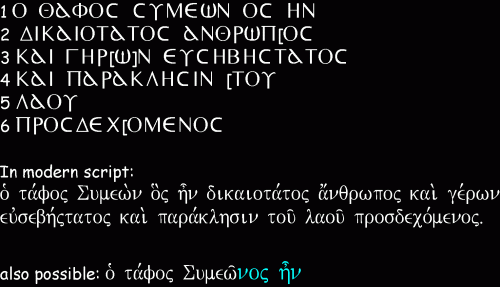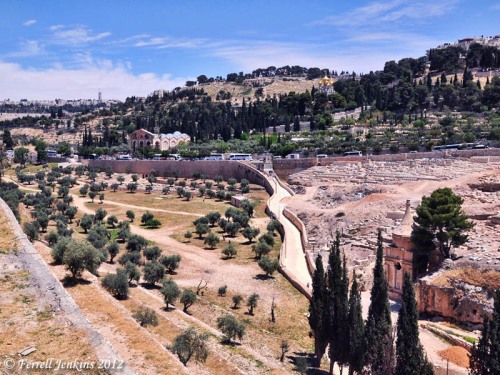'via Blog this'
Earliest evidence of a New Testament verse in stone
In two previous posts we have mentioned the so-called Tomb of Absalom in the Kidron Valley here and here. We noted that the horizontal inscription on the south side of the monument reads,
This is the tomb of Zacharias, martyr, very pious priest, father of John.
We know from Luke 1 that Zacharias was a priest and the father of John (the Baptist). Whether the monument was actually used as the tomb of Zacharias is a matter of conjecture, but the inscription does show what the common belief in the 4th century A.D. about Zacharias and John.
We noted that there are two inscriptions on the Absalom monument. The horizontal inscription is the one mentioned above. The vertical inscription is the one we wish to mention in this post. (In fact, there is a third inscription consisting of a cross and the words “The nephesh.”)
The long vertical inscription consists of the five lines in Greek. Puech translates them as follows,
The tomb of Simeon who was
a very just man
and a very devout el(der)
and (who was) waiting for
the consolation of
the people.
After considerable study, the scholars thought it was clear “that the scribe had engraved the main part of a verse from a gospel, Luke 2:25.” The drawing below shows the six lines of the inscription and the same in modern Greek. Click on the image for a larger, clearer one.
Luke 2:25 is part of the account of the presentation of Jesus in the Temple by Mary. Verse 25 reads,
And there was a man in Jerusalem whose name was Simeon; and this man was righteous and devout, looking for the consolation of Israel; and the Holy Spirit was upon him. (Luke:25 NAU)
The word Israel is changed in the inscription to read people.
Puech and Zias comment about the use of Luke 2:25 in the stone inscription.
So, the inscriptions on the tomb bear witness to the written traditions from the Byzantine period as well as those of the early church fathers. Moreover, the inscription from the Gospel of Luke is identical to that found in the Codex Sinaiticus, dated to the second quarter of the fourth century, prior to a correction according to the text of the Codex Vaticanus (εὐσεβὴς prima manu instead of εὐλαβὴς) around the middle of the sixth century, thus showing that the local Palestinian text was widely accepted as authoritative by the early church of Palestine….
Thus this inscription is the earliest evidence for a New Testament verse engraved in stone, and it fits Palestinian tradition (Puech and Zias 2004: 572).
Most of my information comes from Near Eastern Archaeology, Dec. 2005.
The photo below shows the Kidron Valley. The Mount of Olives is visible in the upper right of the photo. The tomb of Absalom is visible in the lower right. The view is to the northeast. The low hill with buildings in the distant left is Mount Scopus.
One never knows where the next significant discovery will be made.



No comments:
Post a Comment